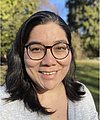Biodiversity Seminar: Collections-based research and fungaria: systematics, conservation, and much more
Datum:
Ort:
WSL Birmensdorf, LG E5
Organisiert von:
Biodiversity Center, WSL
Vortrag:
Juan-Carlos Zamora
Moderation:
Andrin Gross, WSL
Sprache(n):
English
Veranstaltungstyp:
Presentations and colloquia
Zielpublikum:
Anyone interested in the topics
Abstract ¶
Herbaria and fungaria are repositories of biodiversity, whose main goal is to preserve specimens with associated data. Herbarium specimens are, however, much more than stored objects.
All biodiversity research is intrinsically and indissolubly linked to taxonomic concepts, especially to the species concept. This concept is, in practice, based on the series of specimens that taxonomists are able to study: because species are entities with variability, keeping that variation in collections is essential to assess taxon boundaries. Besides taxonomy, nomenclature (the process of naming) is also anchored on herbarium specimens via type specimens. On the other hand, specimens are also an almost never-ending source of various types of data, including morphology, metabolites, genetics, etc.
Beyond the objects themselves, what provides value to any given specimen is the associated label. Labels allow us to trace history and to study, among other things, ecology and distribution, phenology, ethnological and traditional uses, and even human relationships.
During this talk we will oversee these and other topics and discuss the relevance that natural history collections have for research, conservation, and our society in general.
About the speaker ¶
"As curator of the mycological collections of the G herbarium, I oversee guaranteeing the appropriate preservation of the specimens, the collection, identification, and incorporation of new samples, and making specimens and specimen data available to researchers and the public.
My scientific research is focused on the integrative taxonomy and nomenclature of different taxonomic groups of fungi and fungal-like organisms, notably the Geastrales, Dacrymycetes, Tremellales, lichenicolous fungi, and Myxomycetes.
In my studies, I join the use of traditional morpho-taxonomy, DNA-based phylogenetic analyses, and other sources of information to propose comprehensive classifications at different taxonomic levels (families, genera, species) or to describe new taxa.
I also participate in various courses at the University of Geneva related to Mycology and Phycology, as well as in outreach activities (guided visits, exhibitions) of the CJBG".
How to join ¶
Our public seminars are hybrid, with the option to attend in-person or online.
Zoom webinar: link (ID: 650 3334 2319, Password: 348826)
Biodiversity Seminars ¶
The Biodiversity Seminar Series are organized by the WSL Biodiversity Center. Every two weeks, we aim to host a seminar speaker that presents research or outreach on topics relevant to the biodiversity community at WSL. The seminars are public and are usually broadcasted online.
To find out more about the WSL Biodiversity Center and a complete list of events, please visit our website.
Please send an email to events-biodiversity(at)wsl.ch if you would like to be updated on the activities of the WSL Biodiversity Center.
Contact ¶
How to get here ¶
Zürcherstrasse 111, 8903 Birmensdorf
By public transport ¶
Bus stop Birmensdorf ZH, Sternen/WSL
Accessible by bus lines 220 and 350 via Wiedikon/Triemli or via Birmensdorf station with S-Bahn lines 5 and 14.
By car ¶
See map on map.search.ch or Google Maps
You'll find guest parking spaces (for a fee) behind the main building after passing the main entrance.
